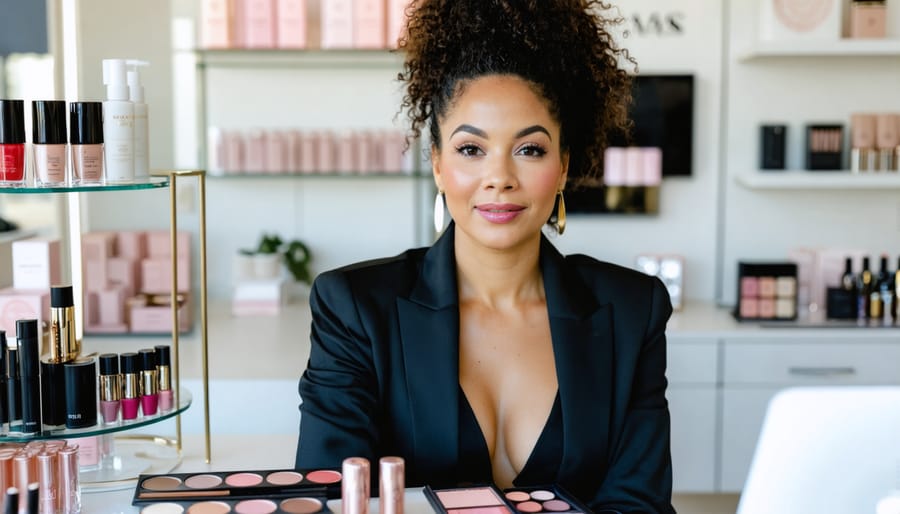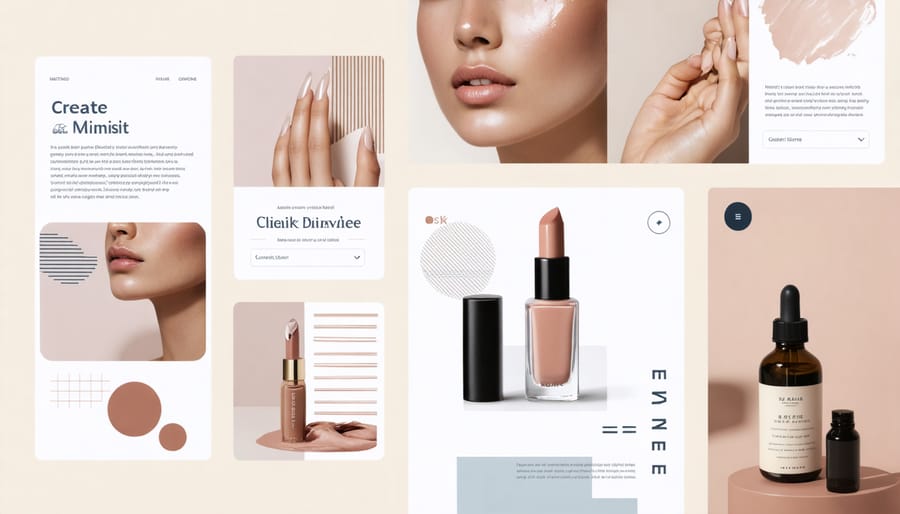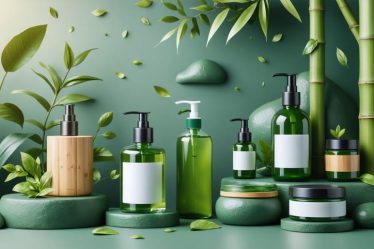
In today’s dynamic business landscape, organizational entrepreneurship represents more than just launching new ventures—it’s about fostering innovation and growth from within established structures. Picture walking into a workplace where every employee thinks like an owner, where creative solutions emerge organically, and where calculated risks lead to breakthrough success. This mindset transformation is revolutionizing how modern companies operate, turning traditional hierarchies into innovation hubs.
Organizations that embrace entrepreneurial thinking consistently outperform their peers, showing 3.5 times higher growth rates and significantly better employee engagement scores. Whether you’re leading a startup or steering a Fortune 500 company, cultivating an entrepreneurial spirit across all levels has become non-negotiable for staying competitive in 2024 and beyond.
Think of organizational entrepreneurship as planting a garden of innovation—it requires the right environment, careful nurturing, and patience to see results. But when done right, it creates a self-sustaining ecosystem where new ideas flourish naturally, teams feel empowered to experiment, and the organization remains agile enough to capitalize on emerging opportunities.
Ready to transform your organization into an entrepreneurial powerhouse? Let’s explore how to build this culture of innovation, empower your team members, and create sustainable growth through strategic entrepreneurial thinking.

Building Your Beauty Business Foundation
Creating Your Brand Identity
Your brand identity is like your business’s personality – it’s what makes you unique and memorable in a crowded marketplace. I remember when I first started my entrepreneurial journey, I thought a logo and pretty colors were all I needed. But creating a truly resonant brand identity goes much deeper than that.
Start by defining your core values and mission. What drives your organization? What makes your approach different? These foundational elements should shine through in every aspect of your brand communication. Think about your target audience and how you want them to feel when they interact with your business.
Your visual identity – including your logo, color palette, typography, and brand identity through packaging – should reflect these values consistently. But remember, your brand voice is equally important. How do you communicate? Are you professional yet approachable? Luxurious but inclusive? Fun and energetic?
Create a brand style guide that documents all these elements. This ensures consistency across all touchpoints, from your website and social media to customer service interactions. Share this guide with your team and partners to maintain a unified brand presence.
Don’t be afraid to let your personality shine through. The most successful brands feel authentic and human. They tell stories, share values, and create emotional connections with their audience. Your brand identity should feel like a natural extension of your organization’s purpose and vision.
Setting Up Your Business Systems
Setting up efficient business systems might not be the most glamorous part of running a beauty business, but it’s absolutely essential for long-term success. Trust me, I learned this the hard way when I first started – trying to keep track of everything in my head led to some pretty chaotic moments!
Start with a robust booking system that allows clients to schedule appointments easily. Many of my successful beauty entrepreneur friends swear by automated scheduling tools that sync with their calendars and send automatic reminders to clients, reducing no-shows significantly.
Next, establish your inventory management system. Keep track of your products, reorder points, and expiration dates. A simple spreadsheet can work when you’re starting, but consider investing in specialized software as you grow. This helps prevent both overstock and those dreaded “out of stock” moments with your most popular items.
Financial systems are crucial – set up separate business banking, implement accounting software, and create a system for tracking expenses and revenue. Consider using a mobile payment system that makes it easy for clients to pay while keeping your records organized.
Don’t forget about client management! Create a database to track client preferences, treatment history, and important notes. This personal touch makes clients feel valued and helps you provide consistently excellent service.
Remember, these systems should work for you, not the other way around. Start simple and scale up as needed – the goal is to spend less time on admin and more time doing what you love: making your clients feel beautiful.
Smart Growth Strategies for Beauty Entrepreneurs
Digital Marketing That Works
In today’s digital landscape, your beauty business needs more than just a pretty Instagram feed to stand out. I’ve learned through years of working with successful beauty entrepreneurs that effective digital marketing is about creating genuine connections while strategically positioning your brand. Understanding luxury beauty market dynamics is crucial for developing your online presence.
Start by identifying your unique brand voice and maintaining consistency across all platforms. Whether you’re quirky and fun or sophisticated and educational, your audience should instantly recognize your content. I’ve seen brands transform their engagement rates simply by staying true to their authentic voice.
Focus on these proven strategies:
– Create valuable content that solves your audience’s problems
– Utilize video content, especially short-form videos like Instagram Reels and TikTok
– Engage with your community through Instagram Stories and live sessions
– Implement email marketing with personalized beauty tips and exclusive offers
– Leverage user-generated content to build trust and showcase real results
Remember to treat your social media platforms as community spaces rather than just sales channels. Share behind-the-scenes glimpses of your business, celebrate customer successes, and actively respond to comments and messages.
One often-overlooked strategy is collaborative content creation. Partner with complementary beauty brands or lifestyle influencers whose values align with yours. These partnerships can exponentially expand your reach while maintaining authenticity.
Most importantly, track your metrics but don’t let numbers overshadow meaningful connections. The most successful beauty brands balance data-driven decisions with genuine community building.

Building Your Dream Team
Building your dream team is like creating the perfect recipe – you need just the right ingredients to make your beauty business shine. As someone who started with just myself and a makeup brush, I’ve learned that surrounding yourself with the right people can make all the difference in your entrepreneurial journey.
First, identify the key roles you need to fill. In a beauty business, this typically includes skilled professionals like makeup artists or estheticians, front desk staff, and possibly a social media manager. Look beyond just technical skills – seek individuals who share your vision and values. I remember hiring Sarah, my first employee, not just because of her impressive portfolio but because she genuinely cared about making clients feel beautiful inside and out.
When interviewing candidates, ask scenario-based questions that reveal their problem-solving abilities and customer service mindset. For example, “How would you handle a client who’s unhappy with their service?” Their response will tell you volumes about their approach to client care.
Create a positive work culture by implementing clear communication channels and regular team meetings. Celebrate victories together, whether it’s reaching a booking milestone or receiving glowing client feedback. Consider implementing a mentorship program where experienced team members can guide newcomers – this builds loyalty and ensures your high standards are maintained.
Remember, your team is an extension of your brand. Invest in their growth through ongoing training and development opportunities. When your team feels valued and supported, they’ll naturally become your biggest brand ambassadors, helping your business grow through their dedication and enthusiasm.
Innovation and Adaptation in Beauty Business
Trend Forecasting and Product Development
Staying ahead of beauty trends isn’t just about following what’s hot – it’s about developing an intuitive sense for what your customers will want next. I remember when clean beauty was just emerging, and the entrepreneurs who recognized its potential early on are now industry leaders.
To effectively forecast trends, start by creating a comprehensive monitoring system. Follow industry publications, attend trade shows, and keep tabs on social media conversations. Pay special attention to micro-trends on platforms like TikTok and Instagram, where beauty trends often emerge before hitting mainstream markets.
But here’s the real secret: combine data with deep customer understanding. Survey your existing customers regularly, engage with them on social media, and pay attention to their changing needs and preferences. Sometimes the best product ideas come from casual conversations with your community.
When developing new products, consider these key factors:
– Market gap analysis
– Customer feedback and requests
– Production feasibility
– Cost considerations
– Regulatory requirements
Remember to maintain a balance between innovation and practicality. While it’s exciting to chase every new trend, focus on those that align with your brand values and customer needs. Start with small batch productions to test market response before scaling up.
The most successful beauty entrepreneurs I’ve met don’t just follow trends – they create them by staying one step ahead of customer desires while remaining true to their core brand identity.

Creating Multiple Revenue Streams
When I first started my beauty business, I quickly learned that relying on a single revenue stream wasn’t enough for long-term success. Today’s beauty entrepreneurs need to think creatively about diversifying their income sources while maintaining sustainable beauty practices.
Consider offering a mix of services and products that complement each other. For instance, if you’re a makeup artist, you might expand into bridal services, create online tutorials, develop your own product line, or offer masterclasses. Each new revenue stream should align with your core expertise while reaching different customer segments.
Digital offerings have become particularly lucrative. Virtual consultations, online courses, and subscription-based content can generate passive income while serving clients beyond your local area. One of my most successful ventures was creating a monthly beauty box subscription that featured curated products and personalized tips.
Product diversification doesn’t mean spreading yourself too thin. Start with one additional revenue stream, perfect it, then gradually expand. For example, you might begin with in-person services, add retail products, then introduce digital courses. Remember to analyze market demand and customer feedback before investing in new ventures.
Don’t forget about strategic partnerships. Collaborating with complementary businesses or creating affiliate relationships can open new revenue opportunities while building valuable industry connections. The key is maintaining quality and authenticity across all your offerings.
Success Stories and Learning Moments
Let me share a remarkable beauty business success story that perfectly illustrates organizational entrepreneurship in action. Sarah Martinez started as a solo esthetician working from her home studio. Within three years, she transformed her small operation into a thriving chain of three wellness spas employing over 30 people. Her secret? Embracing systematic organization from day one.
“I learned early that success isn’t just about being good at treatments,” Sarah shares. “It’s about creating systems that allow your business to run smoothly even when you’re not there.” She implemented digital booking systems, standardized training protocols, and clear communication channels that enabled seamless scaling.
Not every journey is without its challenges, though. Take Jennifer Chen’s experience with her organic skincare line. “My first attempt at expansion was a disaster,” she admits candidly. “I tried to handle everything myself – production, marketing, customer service. I quickly burned out.” This setback taught her the importance of delegating and building a strong team. Today, her brand is carried in major retailers nationwide, thanks to the organizational structure she put in place after learning from her initial struggles.
Another inspiring example comes from Maya Williams, who turned her mobile beauty service into a tech-enabled beauty platform. “I realized that organization wasn’t just about keeping track of appointments and inventory,” she explains. “It was about creating a scalable business model that could grow beyond me.” She developed an app that connects independent beauty professionals with clients, effectively organizing an entire community of entrepreneurs under one digital roof.
These stories share a common thread: success came when these entrepreneurs shifted from thinking like sole practitioners to viewing themselves as organizational leaders. They learned to balance creativity with structure, passion with process, and personal touch with scalable systems.
As we wrap up our journey through organizational entrepreneurship in the beauty industry, remember that success isn’t just about having a great product or service – it’s about creating a sustainable, thriving business ecosystem that grows with you and your team.
Start by implementing small, manageable changes in your business structure. Begin with clear role definitions and open communication channels. Set aside weekly team meetings to discuss goals and challenges, and create a feedback system that encourages innovation from all levels of your organization.
Take time to document your processes and create standard operating procedures. This might seem tedious at first, but it’s crucial for scaling your beauty business effectively. Remember, what works for a small team needs to be adaptable as you grow.
Consider implementing a mentorship program within your organization. Pair experienced team members with newcomers to foster knowledge sharing and build a stronger company culture. This not only helps with skill development but also creates a more engaged workforce.
Most importantly, stay true to your vision while remaining flexible in your approach. The beauty industry is constantly evolving, and your organizational structure should be able to adapt accordingly. Keep learning, stay connected with your team, and celebrate small wins along the way.
Remember, building an entrepreneurial organization is a journey, not a destination. Start implementing these strategies today, and watch your beauty business transform into a more dynamic, innovative, and successful enterprise.



